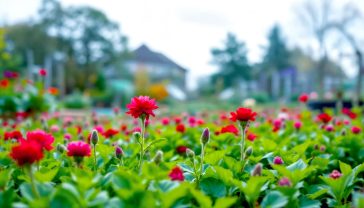A Grand Tour of Timber: Your Ultimate Guide to 10 Exotic Hardwoods
Discover the world’s most durable and eye-catching timbers. Your definitive guide to 10 exotic hardwoods, their uses in the UK, and how to choose sustainably.
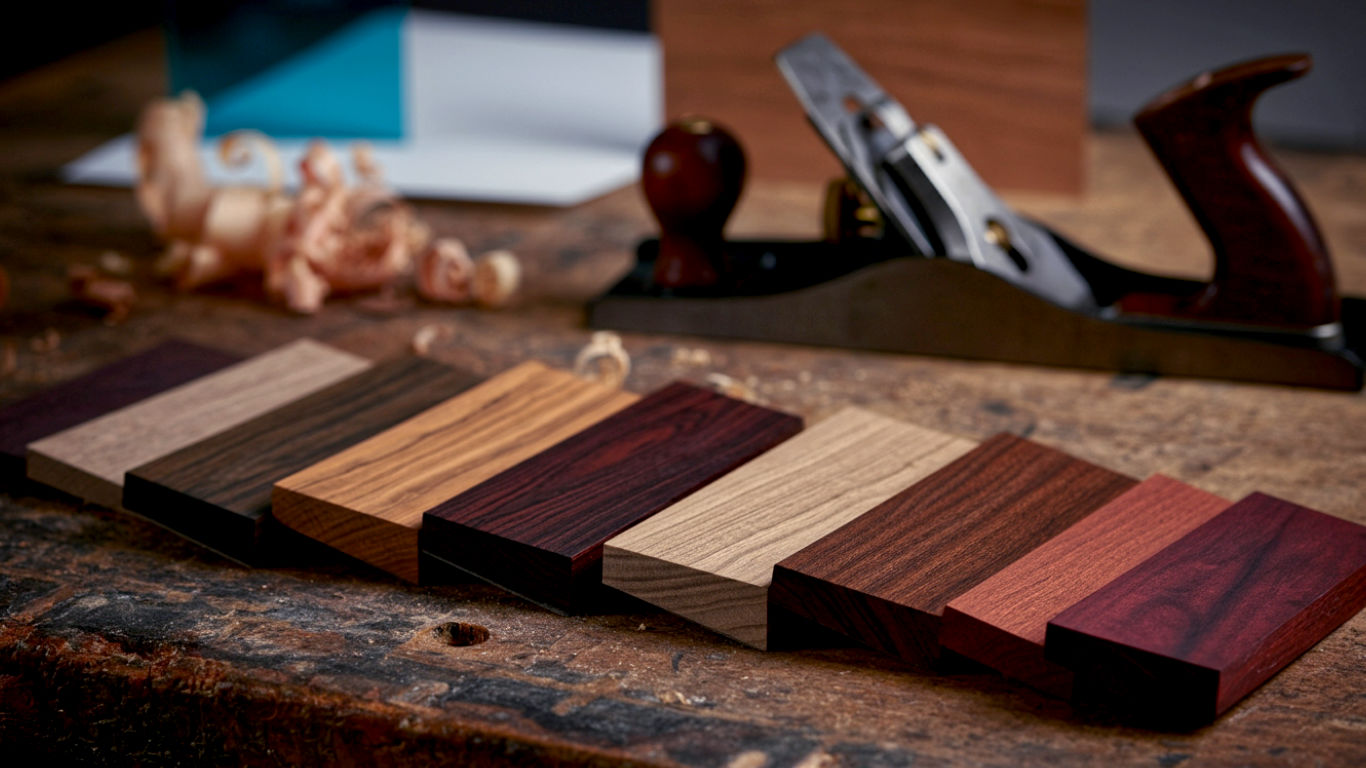
This post may contain affiliate links. If you make a purchase through these links, we may earn a commission at no additional cost to you.
Ever walked into a room and just felt… impressed? Sometimes it’s the high ceilings or the fancy furniture. But often, it’s the floor beneath your feet or the rich, dark wood of a dining table that catches your eye. Chances are, you were looking at an exotic hardwood.
These aren’t your everyday pine or oak from the local woods. Exotic hardwoods are the jet-setters of the timber world. They come from far-flung places like the rainforests of South America, the jungles of Africa, and the vibrant landscapes of Asia. They bring with them a story, a splash of incredible colour, and a toughness that can last for generations.
But what makes them so special? Well, it’s all in the name. ‘Hardwood’ means the timber comes from a broad-leafed tree that drops its leaves in winter. Think of an oak tree in a British park. ‘Exotic’ just means it’s not native to our shores. These trees grow in climates very different from ours, which gives their wood unique properties. They often have dazzling colours—from deep, chocolatey browns to fiery reds and even purples. And they are seriously tough. Many are so dense they can blunt saws and are naturally resistant to things that would make other woods rot or get eaten by bugs.
This guide is your passport to the world of these stunning materials. We’re going to explore ten of the most eye-catching and durable exotic hardwoods out there. We’ll look at where they come from, what makes them tick, and how you might use them to bring a touch of global elegance into your home. We’ll also tackle the really important stuff, like making sure the wood you buy is sourced responsibly, so those amazing forests are still around for years to come. So, grab a cuppa, and let’s begin our journey into the wonderful world of wood.
What’s the Big Deal with Exotic Hardwoods?
Before we dive into our top ten, let’s get a handle on what sets these timbers apart from the familiar oak, ash, or beech you might find in the UK. It really boils down to three things: stunning looks, incredible strength, and a touch of the unique.
Unmatched Beauty and Character
Exotic hardwoods are the peacocks of the timber world. Their beauty is more than just skin deep; it’s baked into their very grain.
- Colour Palette: Forget fifty shades of brown. We’re talking about a whole artist’s palette. You’ve got the deep, almost black tones of Wenge, the rich, wine-red of Padauk, and the mesmerising stripes of Zebrawood. These colours are completely natural, created by the minerals and chemicals in the soil where the trees grow.
- Grain Patterns: The grain is like the wood’s fingerprint. In many exotic species, these patterns are breathtaking. You can find swirling, unpredictable figures, straight and narrow lines, or interlocking grains that seem to shimmer and change as you move around them. This is what woodworkers call ‘figure’, and it’s what makes each piece a one-of-a-kind work of art.
Durability That Lasts a Lifetime (or Three)
If you’re looking for wood that can take a beating and still look fantastic, you’ve come to the right place. Many exotic hardwoods are incredibly dense and strong.
- Hardness: We measure wood hardness using something called the Janka scale. It tests how much force is needed to press a small steel ball into the wood. To give you an idea, our native English Oak has a Janka rating of around 1,120 pounds-force. Some of the woods on our list are two or even three times harder than that! This makes them perfect for things that get a lot of wear and tear, like flooring, kitchen worktops, and outdoor decking.
- Natural Resistance: Growing up in tropical climates with torrential rain and countless hungry insects, these trees have developed some amazing natural defences. Their wood is often packed with oils and resins that make it resistant to rot, decay, and insect attacks. This is why you’ll often see woods like Teak used for garden furniture or even on boats. They can handle a British downpour without batting an eyelid.
The Elephant in the Room: Sustainability
Now for the serious bit. The incredible demand for these beautiful woods has, in the past, led to big problems like deforestation and illegal logging. When forests are chopped down without a proper plan, it harms wildlife, affects local communities, and contributes to climate change.
It’s a huge issue, and it’s something we all need to think about.
Fortunately, things are getting better. Today, there are brilliant organisations working to make sure forests are managed responsibly. The most important one to look for is the Forest Stewardship Council (FSC). When you see the FSC logo on a piece of timber, it’s like a promise. It tells you that the wood has come from a forest that is being managed in a way that’s good for the environment and for the people who live and work there.
Buying FSC-certified wood is the single most important thing you can do. It means you can enjoy the beauty of these amazing materials without worrying about their impact on the planet. Always ask your supplier for proof of certification. A good supplier will be proud to show you. If they can’t, it’s best to walk away.
Now, with that crucial point covered, let’s meet our top ten timbers.
The Top 10: A World of Wood
Here they are—ten of the most desirable exotic hardwoods, renowned for their looks and longevity. We’ll explore what makes each one special.
1. Teak (Tectona grandis)
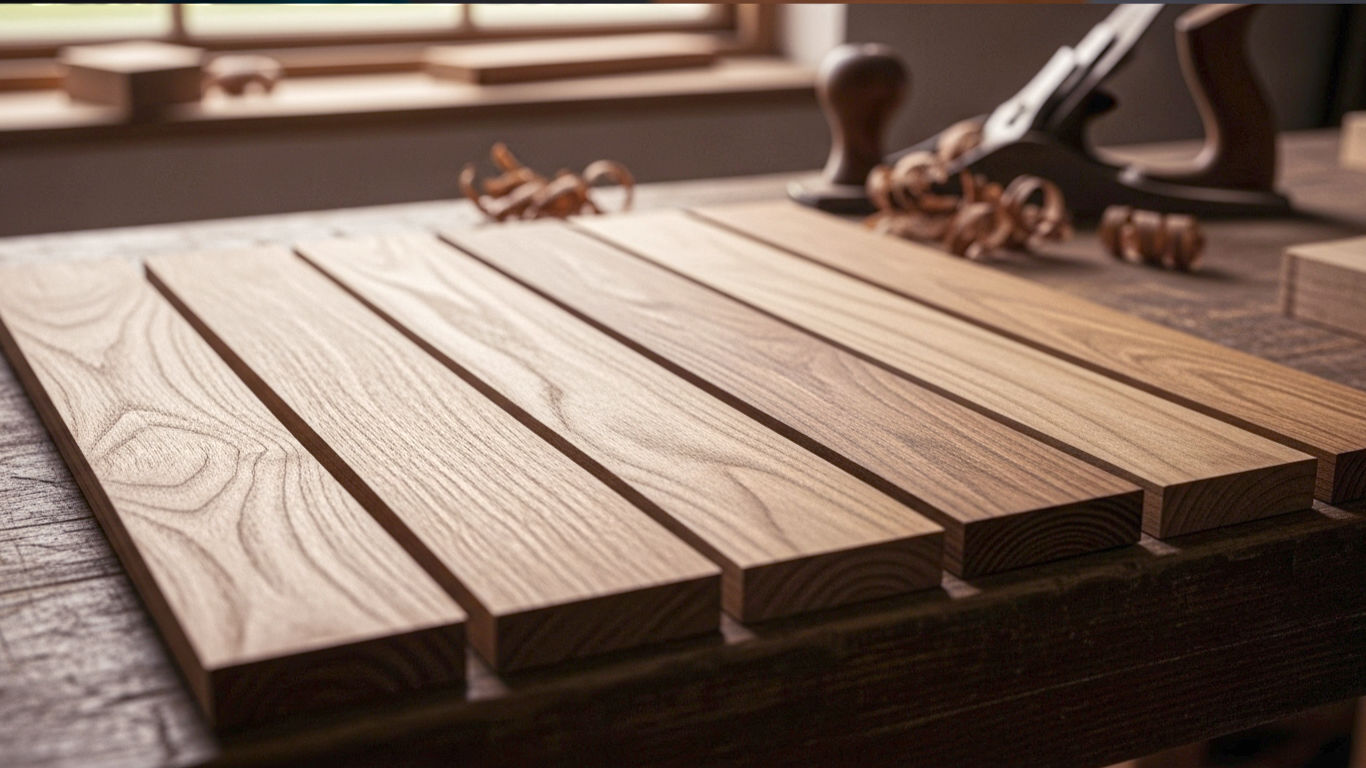
- Origin: Native to South and Southeast Asia, particularly India, Myanmar (Burma), and Thailand.
- The Look: Teak is famous for its beautiful golden to medium-brown colour, which gracefully ages to a silvery-grey patina if left untreated outdoors. Its grain is usually straight, though it can sometimes be wavy, with a coarse, uneven texture.
- Why It’s Great: Teak is the king of outdoor woods. It’s packed with natural oils and silica (the stuff that makes up sand), making it incredibly resistant to water, rot, and insects. This is why it has been used for centuries in shipbuilding. It’s also very stable, meaning it doesn’t warp or crack easily when the weather changes.
- Common Uses in the UK: You’ll see it everywhere in high-end garden furniture—benches, tables, and loungers. It’s also a top choice for boat decking, outdoor cladding, and even for bathroom flooring and worktops where moisture is a constant.
- Heads-Up: True, high-quality Teak (especially old-growth “Burmese Teak”) is expensive and has major sustainability issues. Plantation-grown, FSC-certified Teak is the only responsible choice.
2. Sapele (Entandrophragma cylindricum)
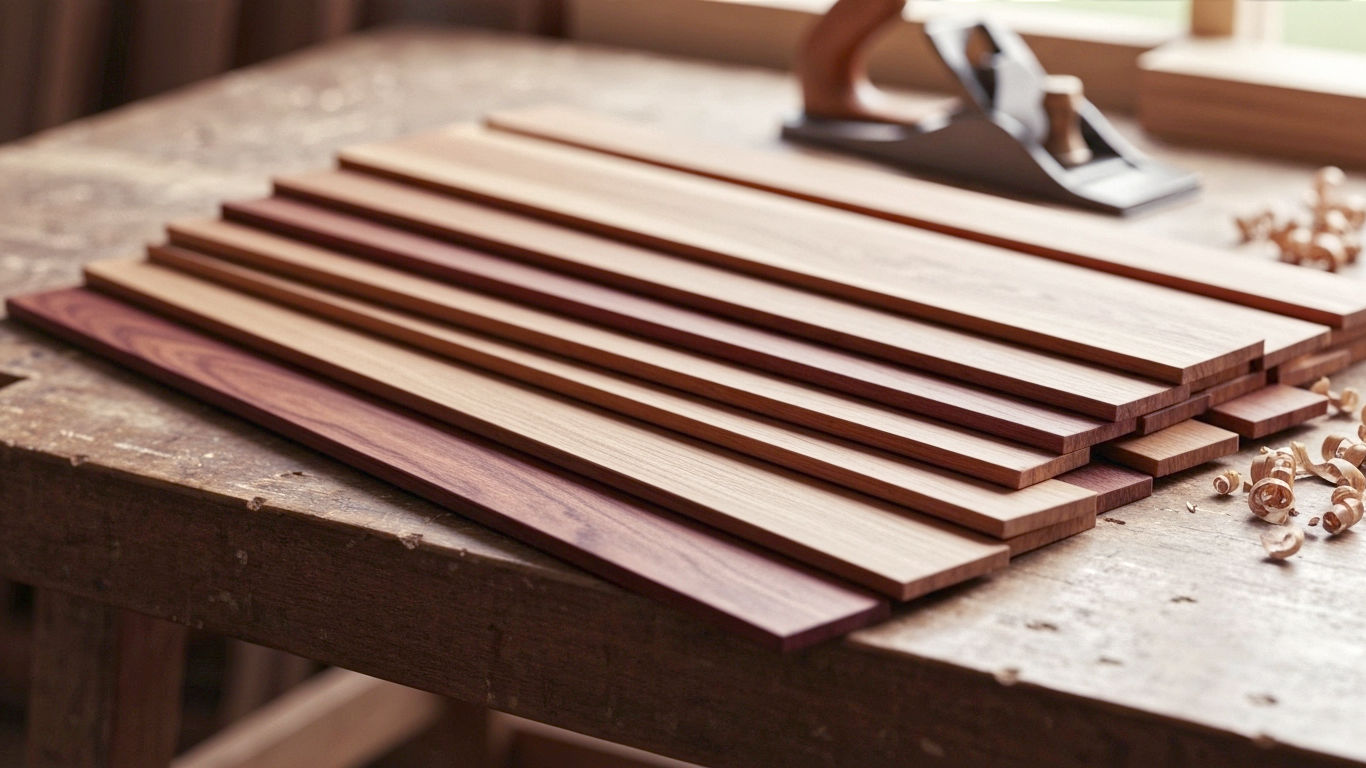
- Origin: West, Central, and East Africa.
- The Look: Sapele starts as a golden to reddish-brown and darkens over time to a rich, deep red. Its hallmark is a stunning interlocking grain that creates a distinct ribbon-like pattern. This figure seems to dance and shimmer in the light.
- Why It’s Great: Think of Sapele as a more sustainable and affordable cousin of Mahogany. It has a similar look and feel but is harder and more durable. It’s a joy to work with, glues well, and takes a beautiful, glossy finish.
- Common Uses in the UK: It’s incredibly versatile. You’ll find it used for windows and doors, high-end furniture, decorative veneers, musical instruments (especially guitars), and flooring. It’s a popular choice for conservatories.
- Heads-Up: The dust from sanding Sapele can irritate your skin and lungs, so good ventilation and a mask are a must when working with it.
3. Iroko (Milicia excelsa)
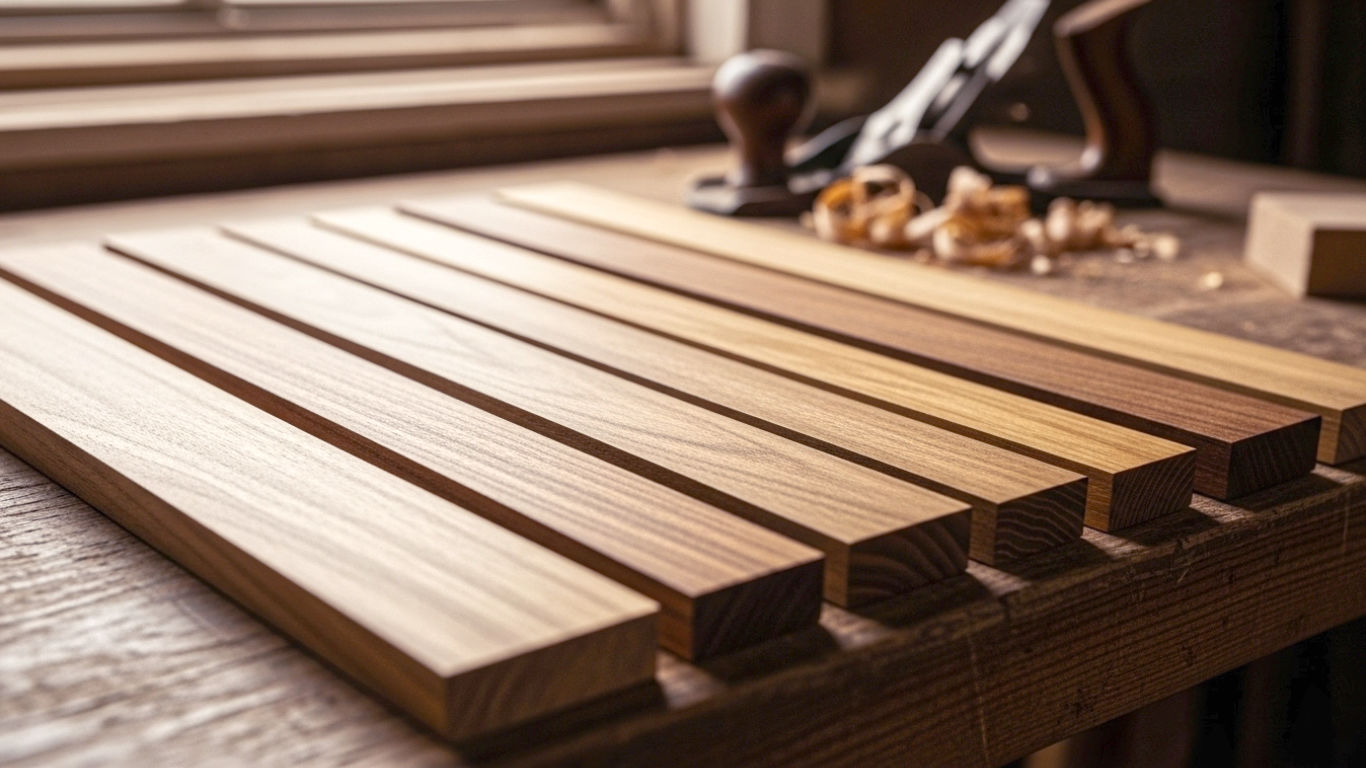
- Origin: West coast of Africa.
- The Look: Iroko is often called “African Teak” for good reason. It starts as a yellowish-brown and darkens to a richer, coppery brown over time. Its grain can be interlocked and irregular, giving it plenty of character.
- Why It’s Great: Like Teak, Iroko is exceptionally durable and resistant to rot and insects, making it another fantastic choice for outdoor use. It’s tough, dense, and much more affordable than Teak.
- Common Uses in the UK: A very popular choice for kitchen worktops, where its durability shines. You’ll also see it used for decking, cladding, boat building, and laboratory benches due to its resistance to chemicals.
- Heads-Up: Iroko contains small, hard deposits called ‘stones’ that can be brutal on saw blades and tools, so sharp, tough tools are essential. Also, make sure it’s properly sealed if used for worktops, as its large pores can trap dirt.
4. Wenge (Millettia laurentii)
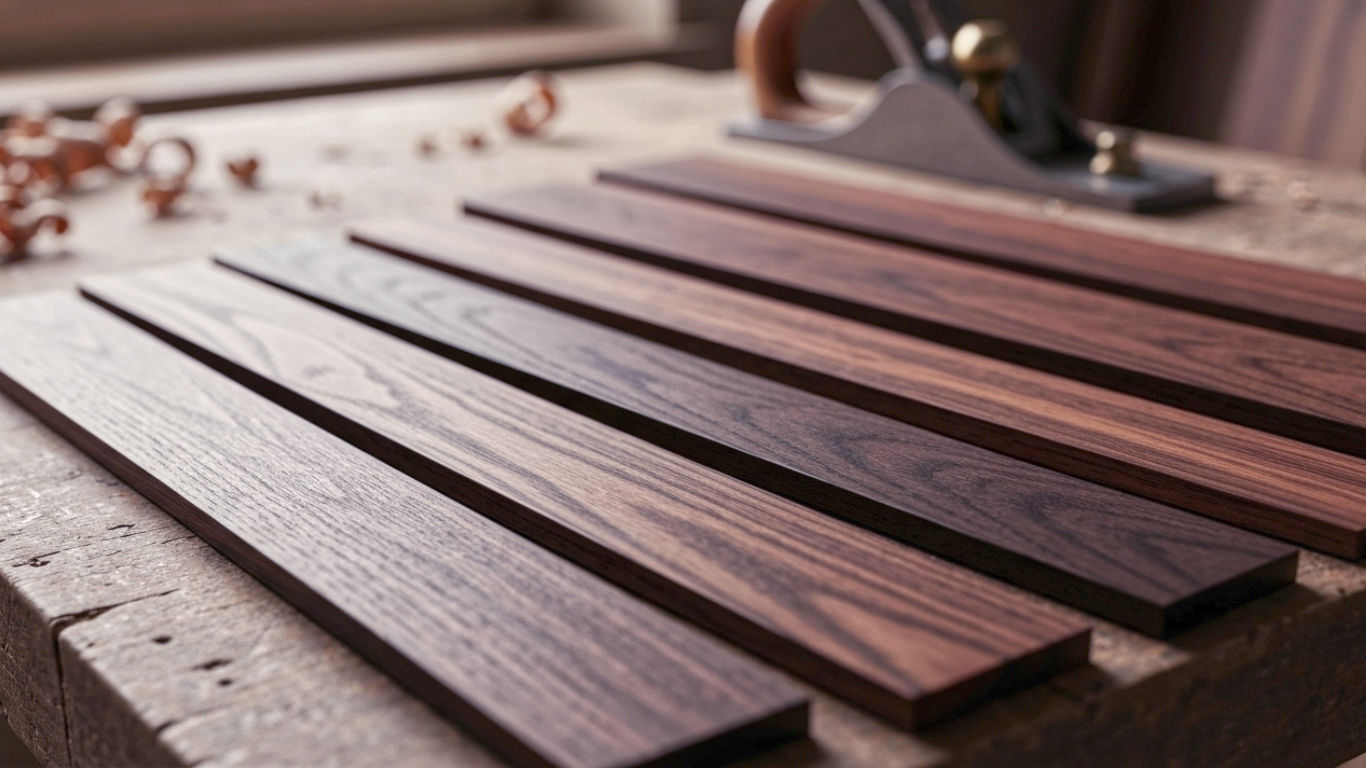
- Origin: Central Africa, mainly Cameroon, Gabon, and the Democratic Republic of Congo.
- The Look: Wenge is dramatic and modern. It’s a very dark brown, almost black, with fine, sandy-coloured lines running through it. This creates a striking, almost animal-print-like pattern.
- Why It’s Great: It is incredibly hard and dense, making it resistant to scratches and dents. Its bold, contemporary look makes it a favourite for creating contrast in designs.
- Common Uses in the UK: Mostly used for high-end flooring, architectural panels, and fine furniture. Because of its hardness, it’s also used for making musical instruments, especially guitar necks and fretboards.
- Heads-Up: Wenge is notoriously difficult to work with. It’s brittle and prone to splintering—and the splinters can easily cause infections. It also blunts tools very quickly. This is one best left to the professional craftspeople.
5. Padauk (Pterocarpus soyauxii)
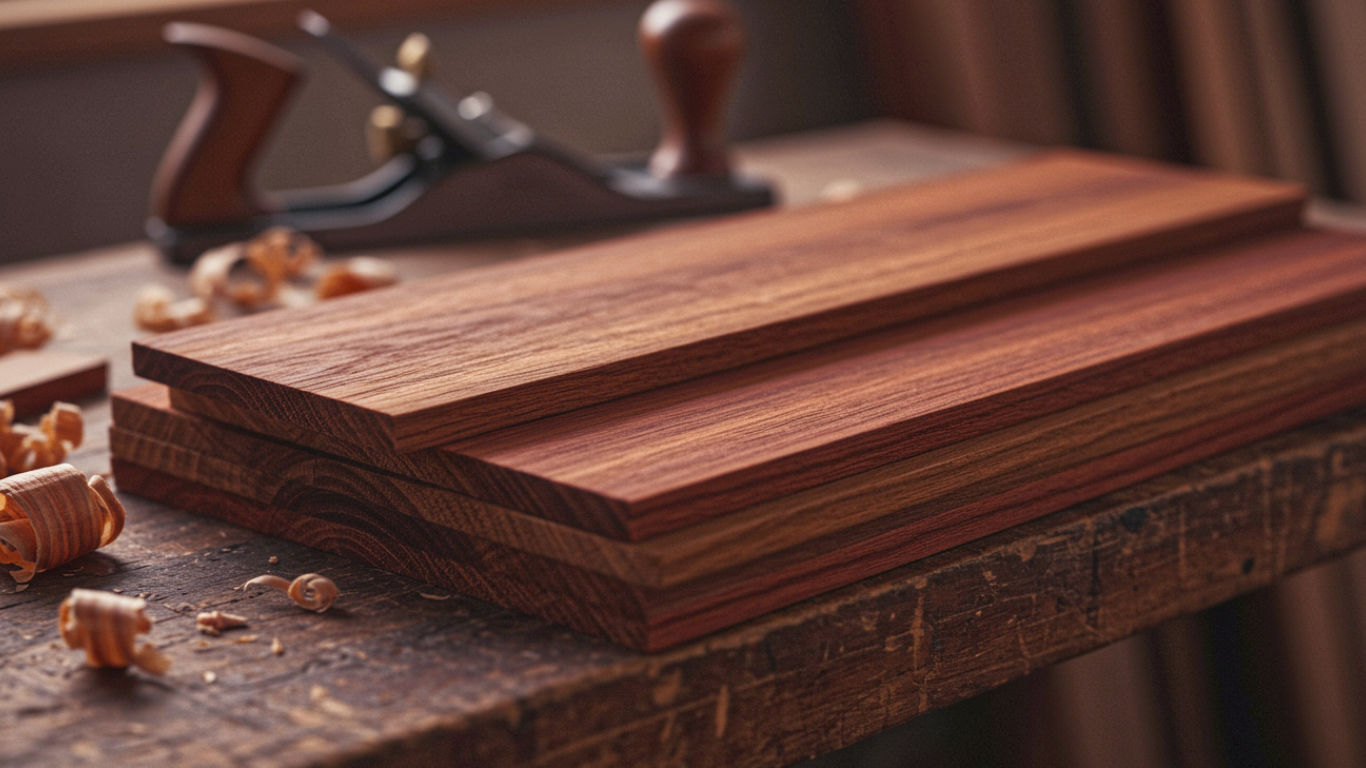
- Origin: Central and tropical West Africa.
- The Look: Prepare to be wowed. When first cut, Padauk is a vibrant, fiery reddish-orange. It’s an absolutely stunning colour. Over time, and with exposure to sunlight, this bright hue will slowly mellow to a deep, reddish-brown.
- Why It’s Great: Beyond its amazing colour, Padauk is very durable and has excellent rot and insect resistance. It’s also surprisingly easy to work with for such a dense wood.
- Common Uses in the UK: Its colour makes it a standout choice for decorative items, veneers, inlays, and musical instruments. It’s also used for fine furniture and small, turned objects like knife handles and bowls.
- Heads-Up: The vivid red dust gets everywhere when you work with it, staining clothes and other nearby woods. Good dust extraction is a must. The colour change is also something to be aware of—if you love the initial bright orange, a UV-blocking finish can help slow the process down.
6. Purpleheart (Peltogyne spp.)
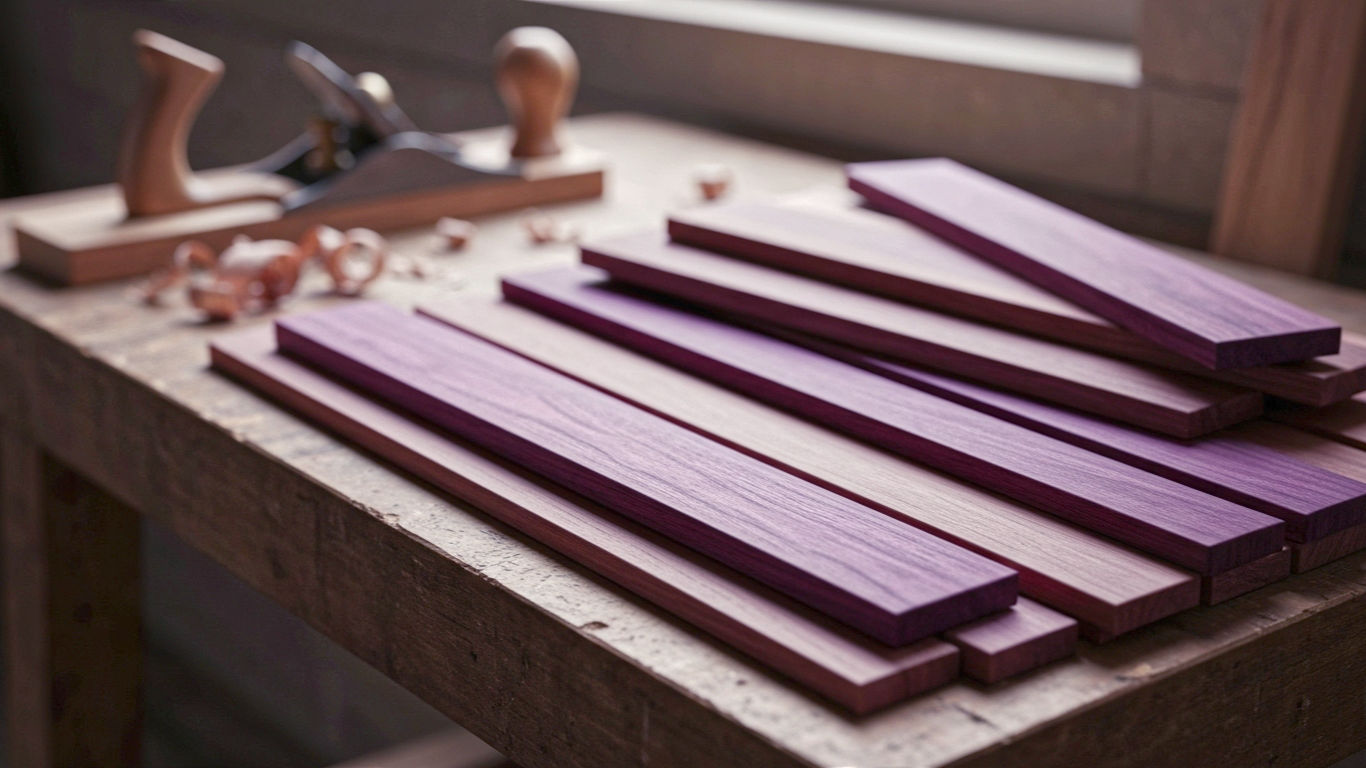
- Origin: Central and South America, from Mexico down to Brazil.
- The Look: Just as the name suggests, this wood is famous for its incredible deep purple colour. When freshly cut, it’s a dull greyish-brown, but when exposed to the air and sunlight, it magically transforms into a rich eggplant purple.
- Why It’s Great: Purpleheart is one of the hardest and stiffest woods in the world. It’s exceptionally durable and resistant to just about everything, including water and rot. It’s the tough guy of the timber world.
- Common Uses in the UK: Its toughness makes it great for heavy-duty applications like lorry decking and industrial flooring. But its amazing colour also sees it used in decorative pieces, marquetry, furniture, and gym equipment.
- Heads-Up: Like Padauk, the colour will change over time, eventually darkening to a deep brown with a hint of purple. It’s also very hard on tools. Applying heat while working with it can sometimes ruin the purple colour, turning it black.
7. Zebrawood (Microberlinia brazzavillensis)
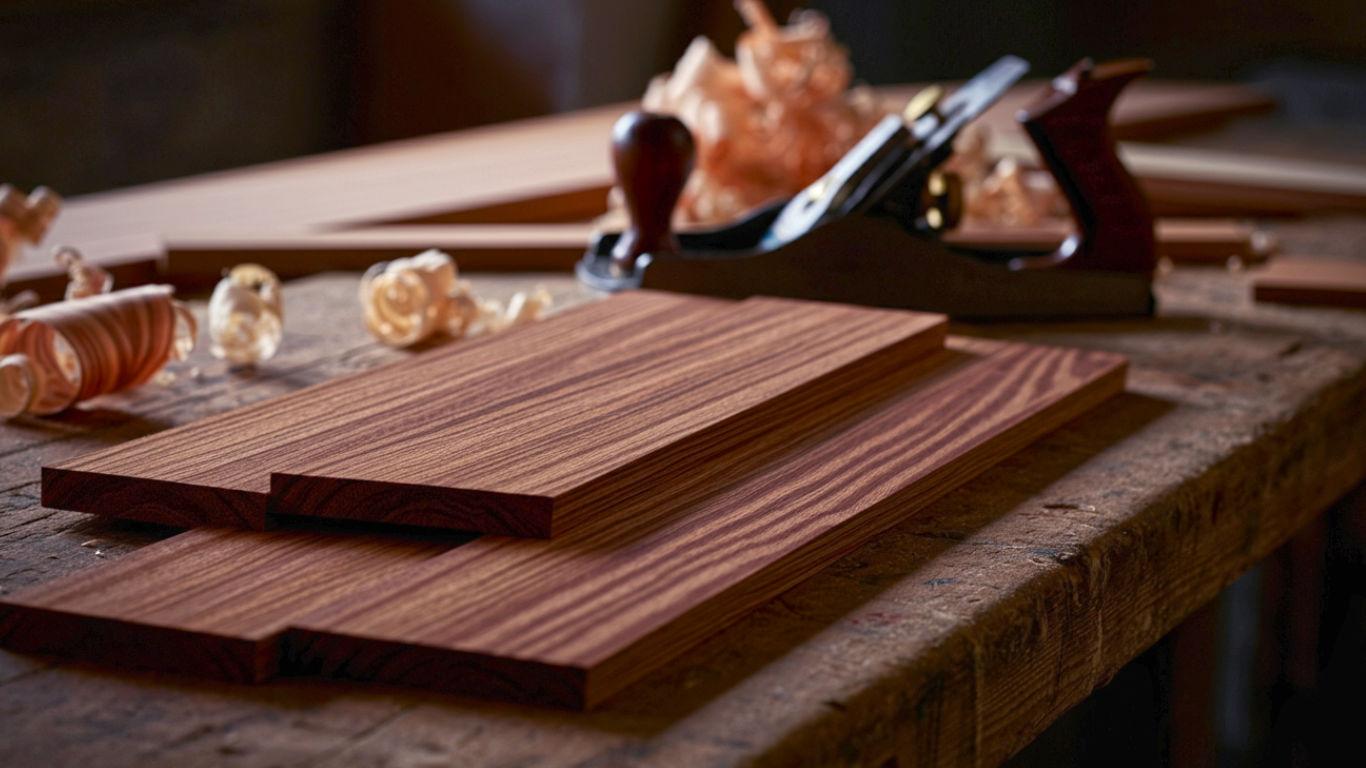
- Origin: West Africa, primarily Cameroon and Gabon.
- The Look: Zebrawood is all about the stripes. It has a pale, golden-yellow base colour with dark blackish-brown streaks running through it, resembling a zebra’s coat. The effect is bold, dramatic, and unforgettable.
- Why It’s Great: It’s a fairly dense and coarse-textured wood with a good natural lustre. Its main selling point is its incredible visual appeal. It’s guaranteed to be a conversation starter.
- Common Uses in the UK: Mostly used for its looks. You’ll find it as a veneer on high-end furniture and cabinets, on luxury car dashboards, and for small, special items like jewellery boxes and guitar bodies.
- Heads-Up: The interlocking grain that gives Zebrawood its stripes also makes it tricky to work with. It can be prone to tear-out (where fibres get ripped out) during planing and routing. It’s also becoming rarer, so checking for FSC certification is vital.
8. Jatoba (Hymenaea courbaril)
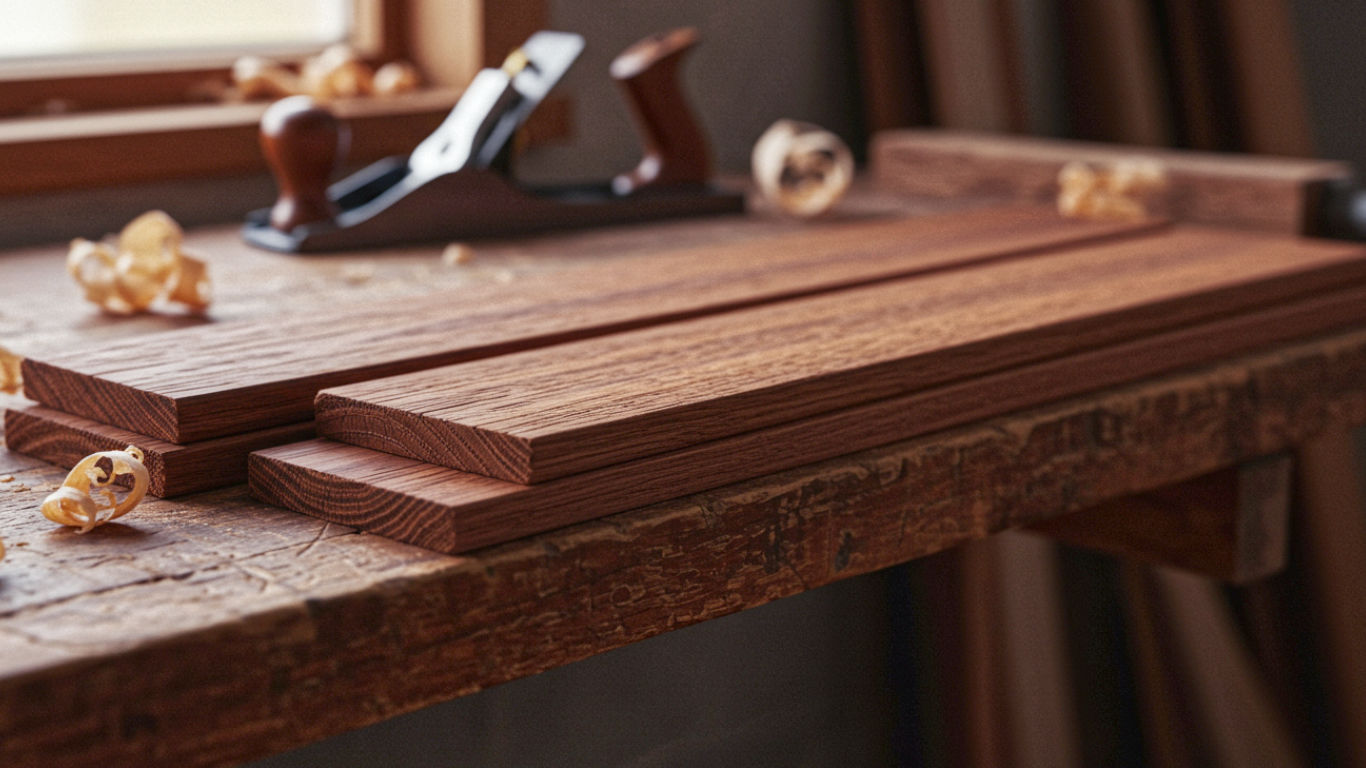
- Origin: Central and South America, and the West Indies.
- The Look: Often called “Brazilian Cherry,” though it’s not a cherry tree at all. Jatoba has lush, rich colours ranging from salmon-red to orange-brown, often with dark streaks. It darkens significantly over the first few months after being cut.
- Why It’s Great: Jatoba is seriously hard. With a Janka rating of around 2,690, it’s more than twice as hard as English Oak. This makes it an outstanding choice for flooring in busy homes or commercial spaces. It’s tough, durable, and looks absolutely beautiful.
- Common Uses in the UK: Its number one use is solid wood flooring. It’s also used in furniture, cabinetry, and tool handles. Its strength makes it suitable for stair treads and other high-impact areas.
- Heads-Up: It can be difficult to work due to its sheer density and hardness. It can also be a bit tricky to glue because of its natural oils. Pre-drilling for nails and screws is essential to avoid splitting the wood.
9. Merbau (Intsia bijuga)
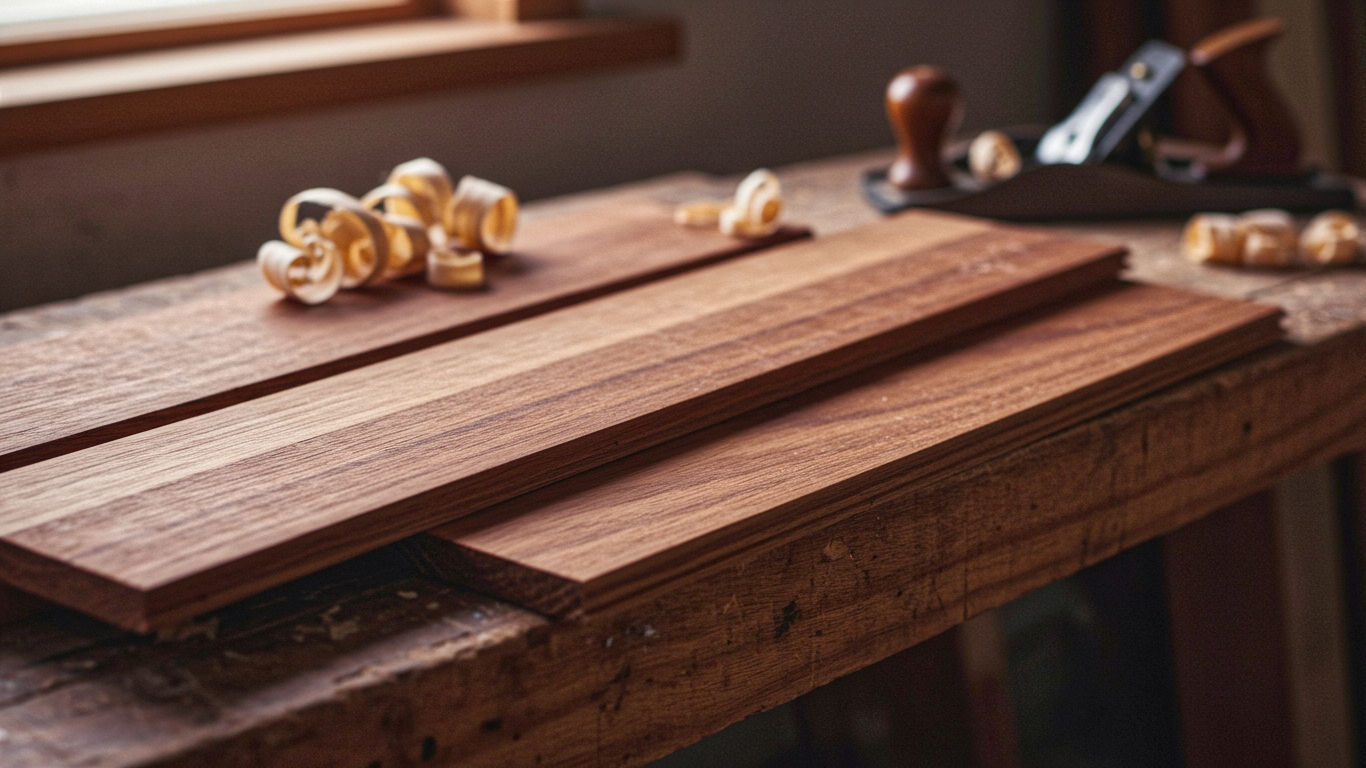
- Origin: Southeast Asia, Papua New Guinea, and the Pacific islands.
- The Look: Merbau has a rich, orangey-brown colour when freshly cut, which deepens to a dark reddish-brown. It often has small, attractive yellow mineral deposits in its pores that glitter in the light.
- Why It’s Great: It’s another highly durable and stable wood, perfect for places with changing humidity. It’s naturally oily, giving it great resistance to rot and insects, and it’s very hard-wearing.
- Common Uses in the UK: Very popular for outdoor decking and flooring. It’s also used for window frames, furniture, and in construction where durability is key.
- Heads-Up: Merbau is known for ‘bleeding’ its natural tannins when it gets wet. This can leave reddish-brown stains on surrounding surfaces (like patios or walls) if it’s not properly sealed or allowed to weather first. It’s a good idea to give it a thorough wash or leave it out in the rain for a few weeks before installation.
10. Ipe (Handroanthus spp.)
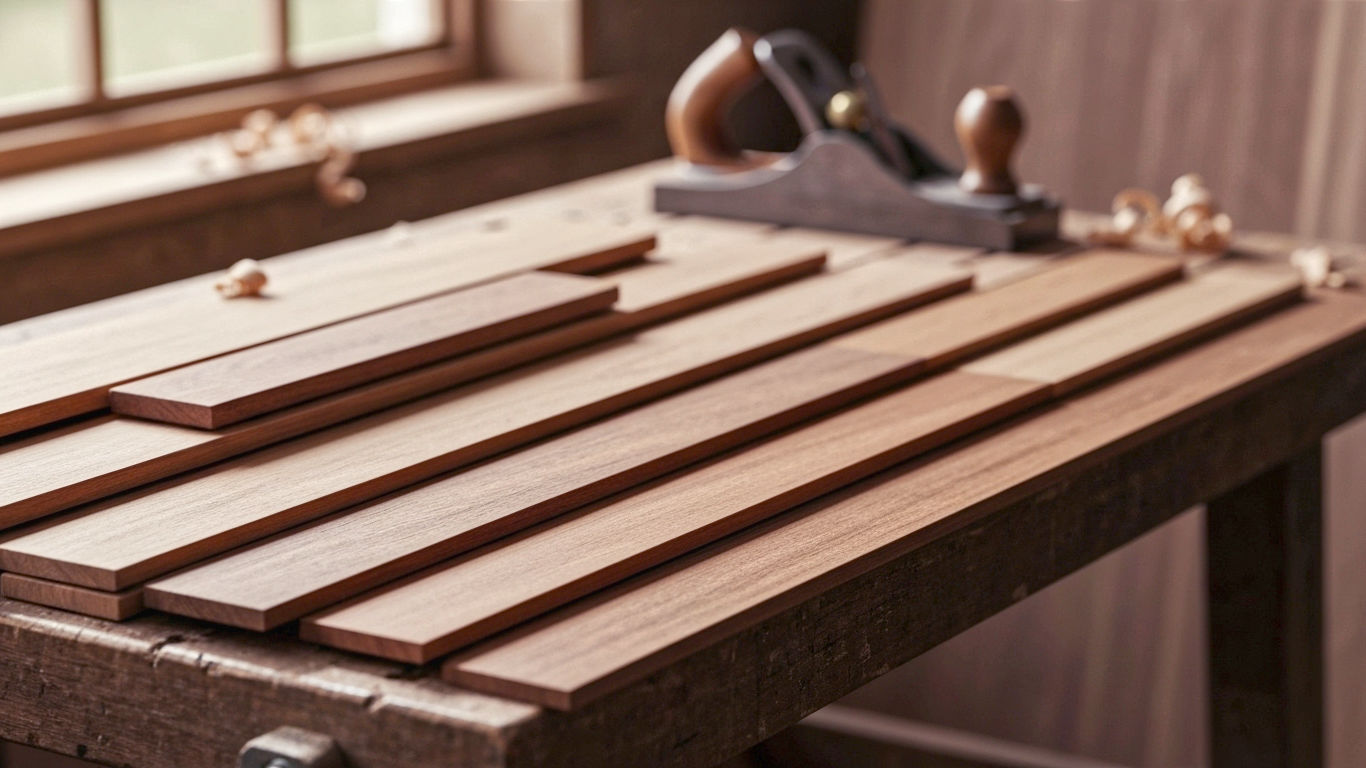
- Origin: Central and South America.
- The Look: Ipe (pronounced ee-pay) has a rich, olive-brown to dark brown appearance, sometimes with reddish or greenish hues. Its grain can be straight or irregular.
- Why It’s Great: Ipe is the undisputed champion of hardness. With a Janka rating over 3,500, it’s like iron in wood form. It’s so dense that it has a fire rating similar to concrete and steel. It’s virtually impervious to rot, insects, and the weather. An Ipe deck can easily last for 40 years or more with minimal care.
- Common Uses in the UK: It’s the ultimate choice for high-end outdoor decking, cladding, and boardwalks. Anywhere you need extreme durability and weather resistance, Ipe is the answer.
- Heads-Up: All that hardness comes at a price. Ipe is incredibly difficult to work with. It destroys tool blades, is nearly impossible to nail or screw without extensive pre-drilling, and is very heavy. It’s also one of the more expensive decking options. Responsible sourcing is absolutely critical for Ipe.
Making the Right Choice: Practical Tips for British Buyers
Feeling inspired? Great. But before you rush out to buy a lorry-load of Purpleheart, here are a few final thoughts to help you choose the right wood for your project and your conscience.
- Match the Wood to the Job: Don’t use a beautiful, expensive wood like Zebrawood for something that’s going to get hidden or battered. Conversely, don’t use a softer wood for a high-traffic floor. Think about the demands of the project. Will it be indoors or outdoors? Wet or dry? High-wear or decorative?
- Think About the Look: Consider the existing style of your home. A dark, dramatic wood like Wenge might look amazing in a modern, minimalist flat but could feel a bit overpowering in a cosy country cottage. Hold samples up in the room to see how they look in the light.
- Budget Wisely: Exotic hardwoods are generally more expensive than domestic timbers. Prices can vary hugely. Get quotes from a few different suppliers. Remember to factor in the cost of any special tools, blades, or finishes you might need. Sometimes, a more affordable but similar alternative (like Sapele for Mahogany) is the smart choice.
- Listen to the Experts: Talk to a reputable timber merchant. These people are passionate about wood and have a wealth of knowledge. They can give you advice on which wood is best for your project, how to work with it, and how to finish it properly.
- Demand Sustainability: We can’t say it enough: always, always, always look for that FSC certification. By choosing responsibly sourced timber, you’re casting a vote for healthy forests and a healthy planet. It’s a simple choice that makes a world of difference.
Exotic hardwoods offer a gateway to creating something truly special. They bring a story, a sense of place, and a natural beauty that simply can’t be faked. By choosing wisely and responsibly, you can bring a piece of the world’s most beautiful forests into your home to be cherished for a lifetime.
Further Reading
For those looking to delve deeper, here are some highly respected resources in the UK:
- TRADA (The Timber Research and Development Association): The UK’s leading authority on wood. An incredible resource for technical specifications on almost any timber species. https://www.trada.co.uk/
- Forest Stewardship Council (FSC) UK: Learn more about the importance of certification and find FSC-certified suppliers in your area. https://uk.fsc.org/
- Wood Finishes Direct: A great source of information on how to finish and care for different types of wood, with plenty of guides and expert advice. https://www.wood-finishes-direct.com/
- The Wood Database: A fantastic online encyclopedia for wood species, packed with detailed information on properties, uses, and identification. https://www.wood-database.com/



